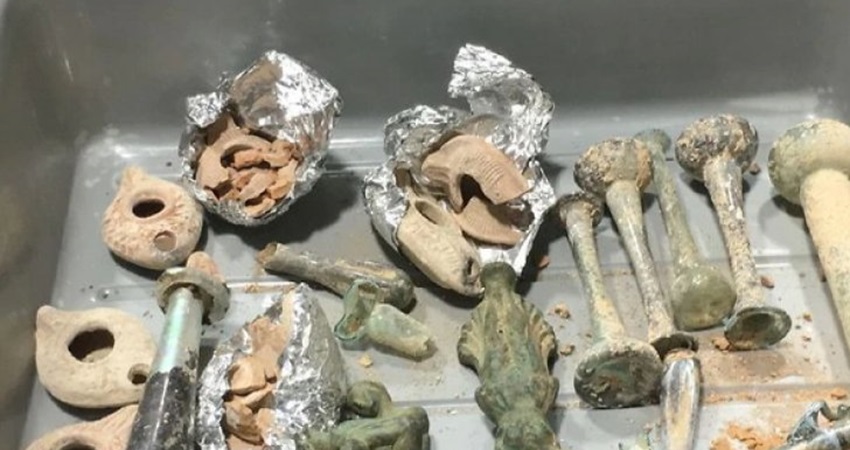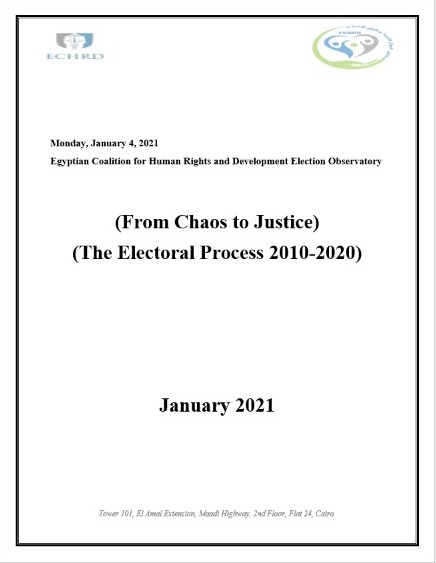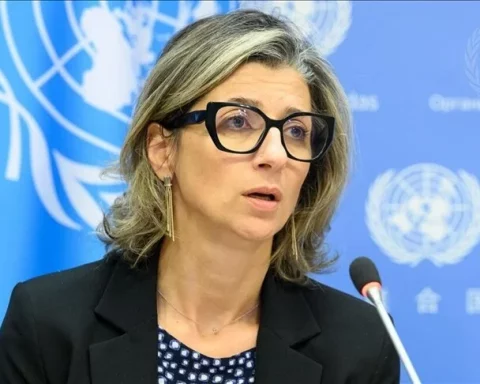Press Release
FDHRD issues report titled “Corruption in Antiquities in Egypt: Monitoring Corruption inside the Supreme Council of Antiquities”
On Thursday, the Forum for Development and Human Rights Dialogue issued a report titled “Corruption in Antiquities in Egypt” about monitoring corruption in Supreme Council of Antiquities. The report monitors incidents of corruption forms inside the Supreme Council of Antiquities which varied from wasting public money, neglecting protection of antiquities, serious negligence in performing the job and abusing workers.
The report sheds light on the most serious issue investigated by the administrative prosecution all over Egypt in regard to corruption in antiquities which revealed by a report issued by the unit of statistical analysis and sent to the Presidency, the Prime Minister and the Minister of Antiquities included the total number of these cases which reached 1048 cases all over Egypt. The report also revealed that Cairo recorded the highest number of cases (404 cases) followed by Qina which recorded 90 cases. The report tackles the most prominent cases in antiquities sector as follows: ‘the procedures of King Tutankhamun’s mask restoration’; ‘A German regiment taking over stones and samples inscribed with the name of king ‘Khufu’ from inside the rooms of the Great Pyramid’, ‘Destroying an antique site which of architectural value in Al Muizz Le Din Allah Al Fatmai Street’, ‘violations in restoration works of the northern and eastern parts of historical Cairo in Al Gamilia Area’.
Legally in regard to protecting antiquities, the report points out that a lot of laws and legislations related to protection of Egyptian antiquities have been issued since the beginning of the 19th Century which ended with law no. 117 of 1983 which was amended on 18th March 2020 according to law no. 20 of 2020. Despite this long history of laws and legislations Egyptian antiquities are still subjected to theft and smuggling.
The report highlights the incidents of corruption and wasting of public money in antiquities sector, the most important of which are:
- Financial corruption and administrative and financial violations at a cost of 30 million Euros in addition to referring 3 officers in the Supreme Council of Antiquities to the Supreme Disciplinary Court in the incident of concluding an agreement between Ministry of State for Antiquities Affairs and Spain in regard to a Spanish loan of 30 million Euros to provide and supply equipment to secure ancient sites in both areas of Pyramids and Luxor. according to the agreement 30 containers of equipment were supplied from Spain.
- Wasting public money in the project of ancient hill of Basta as new violations had been committed by “Al Shorbagi” Construction Company and the technical committee who were responsible for the project which was implemented in 2006. This is although ten years have passed since the project of developing antiquities of Basta Hill as the project’s costs were increased with 3 million pounds with exaggerated prices which have not been studied by the engineering management which is considered wasting of public money and helping others to profit without any right to.
- Corruption in the Grand Egyptian Museum – the Egyptian Museum which included negligence in restoration of the Grand Egyptian Museum and facilitating taking over public money by disbursing 2 million and 200 thousand pounds as over times and rewards unjustly in the Ministry of Antiquities in addition to severe negligence which led to destroying antiques during relocating them and great violations in the project of preparing and developing the basement of the Egyptian Museum.
- Neglecting the protection of the ancient statue of ‘Basmatik I’ which was discovered in the east of Cairo in March 2017.
- Destroying the ancient landmark of the Ancient Hill in Qisna area in Al Monofia and taking over antiquities estimated with about 5 million pounds.
- Severe negligence of performing job duties as 27 employees in antiquities sector and agriculture administration were referred to the disciplinary court because of their negligence in performing their job duties which allowed a number of citizens to dig and drill in the ancient hill of Om Harb in the ancient area in Al Monofia in addition to building greenhouses in violation of the law.
- Financial and administrative violations in developing and restoring the Mosque of Al Zaher Babris as the necessary procedures were not taken in regard to inclusion of complementary contract no. 2 regarding the development of the Mosque of Al Zaher Babris in Cairo as the implementation period exceeds the agreed upon period.
- Disappearance of 73 ancient chandeliers from Al Hussien Mosque; the incident which was discovered by the member of the Supreme Council for Islamic Affairs. These chandeliers were a gift from the family of Mohamed Ali Basha.
The report issued by the Forum for Development and Human Rights Dialogue concluded with a number of recommendations and proposed solutions to address deficiencies in the system of antiquities protection and controlling, the most important of which are:
- Aggravating penalties of antiquities crimes whether robbery, take them over, illegal drilling, trading or smuggling them.
- Taking into account the necessary technical and administrative experience of those who entrusted to leadership jobs in museums.
- Notifying the Interpol and UNESCO with the number of missed antiques, their descriptions, their measurements and details for each one separately.
- Give the Ministry of Antiquities more powers to pursue and punish the antiquities smugglers.
- Providing the necessary security protection for museums and places of keeping antiquities with electronic iron gates and high walls which cannot be penetrated.
- Not to open showcase of antiquities for photographing by foreigners or students or circulating them unless with a written consent by the secretary general of the Supreme Council for Antiquities, the number of antiques should be written in the minutes of opening the showcase and the records.
It is worth mentioning that the Forum for Development and Human Rights Dialogue in January 2011 issued a report entitled “Corruption in Antiquities in Egypt: Documentary Incidents of Corruption Forms inside the Supreme Council of Antiquities” for the period from January 2001 till January 2010.








